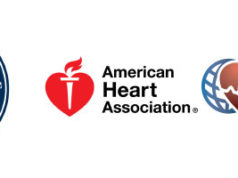
When speaking on therapy of vasovagal syncope (VVS), it is important to stress that a specific treatment of VVS is only rarely necessary in clinical practice. Indeed, in the majority of patients, VVS is a benign condition that does not represent a threat to life and that does not significantly impair quality of life; writes Antonio Raviele (Venice, Italy) for Cardiac Rhythm News.
In these patients, syncope may be easily prevented by patient reassurance about the benign nature of his or her condition and other educational measures, in particular recognition of premonitory symptoms, and avoidance of precipitating conditions such as: prolonged sitting or standing in crowded and hot places, strenuous exercise in warm environment, dehydration, volume depletion, potentially hypotensive drugs, venipuncture and emotional stressful situations. Therefore, a specific treatment is only indicated in particular situations, ie. patients with frequent syncopal episodes, absence of predictable circumstances or warning symptoms that allow the patient to assume supine position or other evasive action, important physical injury and potential occupational hazard.
Therapy for VVS patients
The main therapeutic measures, that are currently available for the treatment of VVS, include non-pharmacological, pharmacological, and electrical options.
Non-pharmacological options
Amongst the non-pharmacological options—besides patient reassurance and counselling—we have to mention high salt diet, increased water intake, support stockings, counter-pressure manoeuvres, and tilt training. Counter-pressure manoeuvres are simple measures, such as handgrip, arm muscle tensing, leg crossing and muscle tensing, squatting, bending forward and crash position, that patients may activate at the time prodromal symptoms develop. All these manoeuvres act in interrupting the vasovagal reaction by increasing venous return, cardiac output and blood pressure. The effectiveness of these manoeuvres has been confirmed in a multicentre prospective trial, the PC trial in 2006. During a mean follow-up of 14 months patients trained in counter-pressure manoeuvres had a significantly lower syncopal recurrence rate compared to patients conventionally treated: 31.6% vs. 50.9%. However, in a recent sub-analysis of the ISSUE 3 trial, no statistical difference in terms of freedom from syncope recurrence was found between patients who performed counter-pressure manoeuvres training and control untreated patients.
Tilt training was initially proposed by Ector and colleagues in 1998. It consists of five in-hospital head-up tilt sessions for a planned duration of 10‒50 minutes at 60° (once a day for five days), followed by daily tilt training at home by standing against a wall for a planned duration of up to 40 minutes (twice a day). In the literature there are discordant results regarding the real efficacy of this measure. A recent meta-analysis of all studies performed with tilt training showed that this therapy is effective in preventing recurrences of VVS. However, the effect is lost if only randomised studies are included. Moreover, tilt training is hampered by the low compliance of the patients to continue the treatment for a long period of time. Consequently, tilt training, at best and if really effective, may be recommended only in a very selected group of highly motivated patients.
Pharmacological options
Amongst the pharmacological options, several drugs with different effects have been proposed for the prevention of VVS. These include alpha-agonists, beta-blockers, fludrocortisone, serotonin inhibitors, disopyramide, scopolamine, theophylline, clonidine, and ACE-inhibitors. In open studies, almost all of these drugs have proved to be quite helpful, with an acute efficacy during tilt testing ranging from 33% to 87%, and with a chronic efficacy during the follow-up ranging from 50% to 93%. These apparently good results of open studies are in sharp contrast with those of the long-term placebo-controlled trials that have been performed until now in patients with VVS. Indeed, in all these studies, with only few exceptions, no difference was found in the recurrence rate of syncope during follow-up between patients treated with drugs and those treated with placebo, raising serious doubts about the real value of current drug therapy for treatment of VVS. One of the few drugs that has shown some efficacy is midodrine. This drug has given positive results in four studies, with a consistent risk reduction of syncopal recurrences of more than 60%. However, these studies are not placebo-controlled, were performed in children or extraordinarily symptomatic patients, used tilt test outcomes as the main measure, regarded a limited number of patients, and had a short period of follow-up. Moreover, the effectiveness of midodrine was not confirmed in STAND-trial, a randomised cross-over trial of midodrine against placebo in patients with VVS not responding to non-pharmacological treatment.
Another drug that can be used but only in patients older than 42 years is metoprolol. Indeed, a meta-analysis of pre-specified, pre-stratified sub-study of POST 1 and a large earlier observational study have shown benefit of metoprolol in these patients, differently from younger patients who did worse with beta-blockers. However, these data need to be confirmed by an ongoing prospective, multicentre, randomised trial (POST 5) with results expected in 2017, before they can be largely applied in daily clinical practice. Finally, also fludrocortisone seems to be useful at least in young patients. Indeed, in the POST 2 trial recently published in JACC, fludrocortisone, at a dose of 0.2mg daily, significantly reduced by 49%, the syncopal recurrence rate after the initial two weeks of stabilisation. However, the study did not meet its primary objective of demonstrating that fludrocortisone reduces the likelihood of VVS by the specified risk reduction of 40%. Indeed the reduction was more modest, only 31%. Thus, according to the initial 2001 ESC guidelines on management of syncope, we can still state that to date there are not sufficient data to support the use of any pharmacological therapy for VVS.
Electrical options
Amongst electrical options, we have two possibilities: pacemaker and ablation. The rationale for using a pacemaker for VVS is to counteract the cardioinhibitory component of the pathological reflex. The main studies performed on the value of pacing for VVS include prospective randomised open-label studies and randomised double-blind placebo-controlled trials. In the three randomised open-label controlled studies, VPS, VASIS and SYDIT, a highly significant reduction of syncopal recurrence was observed in patients treated with dual-chamber pacemaker, from 83% to 92%, during a mean follow-up ranging from few months to 3.7 years. By contrast, in the two randomised double-blind placebo-controlled trials, the VPS II and the SYNPACE, no significant benefit of active pacing over inactive pacing was found in the prevention of syncopal recurrence, thus indicating a substantial placebo effect of pacemaker implantation or a form of outcome ascertainment bias in which the knowledge of the presence of pacemaker may lead to expectation of benefit on the part of both patients and clinicians. This is not surprising because the vasodepressor component of the vasovagal reflex, that is always present and often precedes the cardioinhibitory component, is not affected by pacing and, thus, may be responsible for the loss of consciousness, despite the correction of bradycardia, at the time the pathological reflex develops. However, it has been suggested that selecting patients with vasovagal syncope for pacemaker implantation on the basis of the results of implantable loop recorder, may give better results. This seems to be confirmed by the results of the ISSUE trials. In the ISSUE 2 trial, patients with documentation of asystole by implantable loop recorder at the time of spontaneous syncope that were assigned to pacemaker therapy showed a significantly higher freedom from syncopal recurrence compared to patients that were not treated with pacemaker, 90% vs. 59% at one year. Similarly, in the ISSUE 3 trial, the freedom from syncopal recurrence was significantly higher in patients randomised to pacemaker on, than in those randomised to pacemaker off, 75% vs. 43% at two years. Patients who seem to benefit mostly from pacemaker implantation are those with tilt test negative. This is because a positive tilt test might identify patients who are likely to also have a vasodepressor response during VVS, and therefore not respond as well to permanent pacing. According to these data, the 2009 guidelines on syncope management of the ESC give a class IIa recommendation for cardiac pacing in patients 40 years of age or older, with frequent and unpredictable syncope, and with documented spontaneous pauses during electrocardiographic monitoring (≥3 sec if symptomatic and ≥6 sec if asymptomatic). In the very recent ACC/AHA/HRS guidelines for the evaluation and management of syncope published this year, the same indication has a lower class of recommendation, IIB.
In conclusion, until now there are only very limited data on the benefits of pacemaker implantation in patients with VVS. Thus, the evidence does not support the routine use of this therapy beyond patients with recurrent syncope and asystole documented by implantable loop recorder, such as those meeting the entry criteria for the ISSUE 3 trial. Moreover, owing to the risk of complications following pacemaker implantation and the fact that electrical therapy may be ineffective in a significant percentage of patients considered to be appropriate candidates (25% at two years in ISSUE 3 trial), pacing should be considered only in highly selected patients, especially those with repeated injury and limited or absent prodromes.
Finally, cardioneuroablation for VVS was first proposed by Pachon in 2005. It consists in performing a transcatheter endocardial ablation of the parasympathetic post-ganglionic neurons located inside the atrial wall that allows selective vagal denervation and elimination or attenuation of the cardioinhibitory reflex of the VVS. In the last publication of Pachon in Europace in 2011, cardioneuroablation was performed in 43 patients with recurrent VVS and important cardioinhibition at tilt testing and was associated with a 93% reduction of syncopal recurrence during a mean follow-up of 41 months. It is clear that these results, although interesting, need to be confirmed by future randomised, multicentre trials before considering cardioneuroablation a consolidated therapy for VVS.
Antonio Raviele is president of ALFA (Alliance to Fight Atrial fibrillation) and president of Venice Arrhythmias International Meeting











